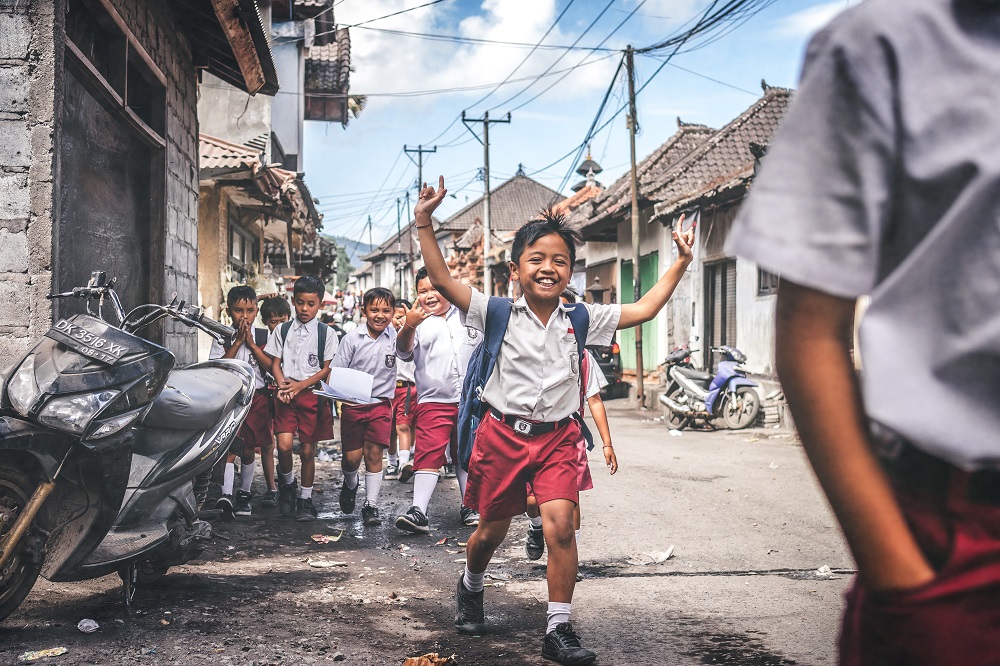
There are many pros and cons to the debate on school uniforms and their use in international schools. Some general points and counterpoints are discussed on idebate.org. In many ways, requiring a uniform can enhance collegiality while minimizing classroom disruptions. They are said to bring a sense of unity, decrease peer pressure and bullying, and lessen distractions in the classroom. Nevertheless, they can be expensive and neither comfortable nor practical. In some schools, blazers and tailcoats are prescribed that are itchy, hot and uncomfortable, while girls often must wear either dresses or skirts. Thankfully, a lot of schools have several uniform options so that children have a choice to wear something they feel most comfortable in. For example, children may be allowed to wear shorts instead of trousers and have short and long-sleeve shirt options. Allowing students a choice brings a “happy medium” to the argument that children lose their sense of “self” or creativity with uniforms. Yet some also argue that allowing children to choose clothing themselves can result in an unkempt and unprofessional appearance that is distracting to learning.
For many countries—for example, Britain, Japan, Hong Kong, and Ghana—wearing uniforms is an integral part of their society, culture, and tradition. In her 2011 study, A Research upon School Uniforms and Personal Style: Thoughts and Experiences of Japanese University Students, Laura Penttinen speaks of the expression “shudan seikatsu,” which means life in a group. She explains, “use of school uniforms is a unifying aspect of an important socialization process.” In other words, the social mores of an international school’s host country will often dictate a dress code in a school across the globe. Sally Jones in her article for the Independent Education Today says that, in a country where freedom of dress is a “cherished right,” The British International School of Stavanger is the only one in Norway with a uniform. While school uniforms remain the norm for British schools, Principal Anne Howells discusses her school’s reasoning:
“Norwegian children and parents often tell us the clothes they wear at school are a source of peer pressure and bullying. . . . Uniform also gives the student a strong sense of identity; helps us forge a collegiate atmosphere and reinforces our school’s ethos. We proudly stand out in the national school children’s parade held in all Norwegian cities on 17 May.”
 The international debate education association website shares some interesting data before introducing common pros and cons of school uniform use. In the past, countries like France, Germany, and U.S.A have not typically used school uniforms, but opinions in those countries are changing. In the U.S.A., public school uniform adoption has increased substantially. A 2018 post of educationnews.org states, “Over the last ten years, the number of public schools either imposing a strict dress code or requiring a uniform grew by over 60%.” Meanwhile, some schools in the uniform-fond U.K. have eliminated the use of school uniforms.
The international debate education association website shares some interesting data before introducing common pros and cons of school uniform use. In the past, countries like France, Germany, and U.S.A have not typically used school uniforms, but opinions in those countries are changing. In the U.S.A., public school uniform adoption has increased substantially. A 2018 post of educationnews.org states, “Over the last ten years, the number of public schools either imposing a strict dress code or requiring a uniform grew by over 60%.” Meanwhile, some schools in the uniform-fond U.K. have eliminated the use of school uniforms.
CEO of the Council of British International Schools Colin Bell spoke to Sally Jones for her article on the role of school uniforms at British international schools:
“A smart, carefully designed uniform reflects the atmosphere of the school and local conditions. In Norway and Ulaanbaatar, Mongolia, for example, daylight is at a premium so hi-vis reflective patches are built into school bags and coats. The overseas international schools all want to replicate top British uniforms, yet certain pupils in hot Middle Eastern countries are still sweltering in thick woolen blazers. A good supplier would ensure the uniform was comfortable and fit for purpose, even in extremes of climate.”
We can only conclude that a school community must weigh and measure the benefits and disadvantages of the uniform in each particular environment. The Bright Side website provides striking images of school uniforms in 15 different countries. Many schools have lessened some of their stricter policies and have begun to design gender-neutral uniforms, says the website. Schools must be flexible and willing enough to challenge tradition, yet design a uniform that makes sense for the culture and climate!
